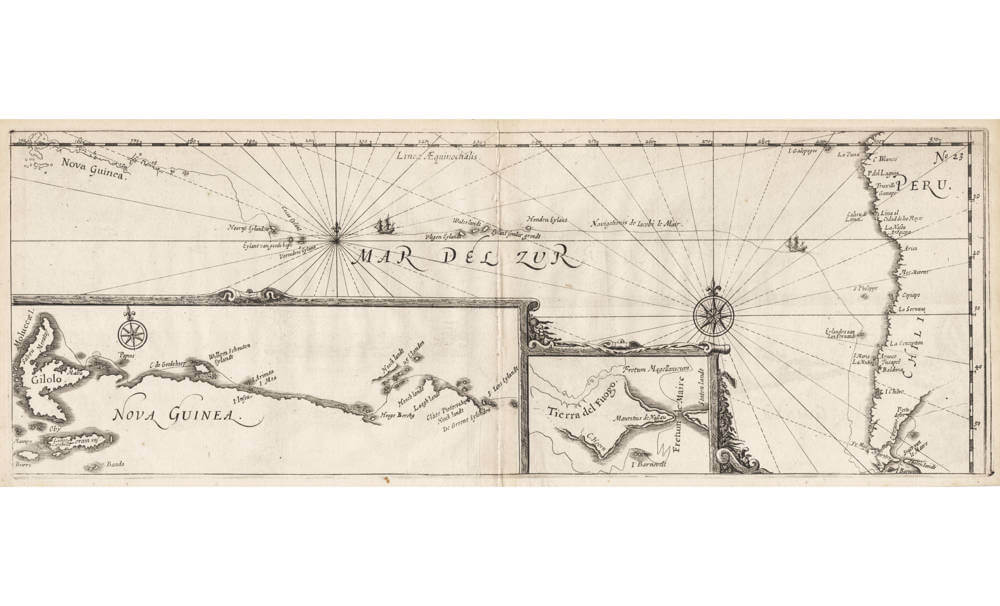Leen Helmink Antique Maps
Old books, maps and prints by Jacob Le Maire
Jacob-Le-Maire (1585-1616)
Jacob Le Maire (c. 1585 – 22 December 1616) was a Dutch explorer who circumnavigated the earth in 1615-1617. The strait between Tierra del Fuego and Isla de los Estados was named the Le Maire Strait in his honour. He rounded Cape Hoorn, proving that Tierra del Fuego was not part of a Southern continent.
Jacob Le Maire was born in Antwerp, one of the 22 children of Maria Walraven of Antwerp and Isaac Le Maire (1558–1624) of Tournai, a merchant in Antwerp. Isaac and Maria married shortly before the Spanish siege of Antwerp in 1585 after which they fled to settle in Amsterdam. Isaac was successful in Amsterdam, and became one of the founders of the Dutch East Indies Company (VOC). In 1605 Isaac Le Maire was forced to leave the company after a dispute and for the next decade tried to break the company's monopoly on the trade to the East Indies.
In 1615 Isaac had established the Australian Company with the goal to find a new route to the Pacific, the Southland and the Spice Islands, thereby evading the monopoly of the VOC which had been defined as all waters east of the Cape of Good Hope and west of the Strait of Magellan. He financed the outfitting of two ships, the Eendracht and Hoorn, and put his son Jacob in charge of trading during the expedition. The more senior ship master Willem Schouten was captain of the Eendracht and a participant of the enterprise in equal shares with Isaac Le Maire.
On 14 June 1615 Jacob le Maire and Willem Schouten sailed from Texel in the United Provinces. On 29 January 1616 they rounded Cape Horn, which they named for the Hoorn, which was lost in a fire. The Dutch city of Hoorn was also the birthplace of Schouten.
They reached the northern Moluccas in August including Ternate, the headquarters of the VOC, on 12 September 1616. Here they were enthusiastically welcomed by Governor-General Laurens Reael, admiral Steven Verhagen, and the governor of Ambon, Jasper Jansz.
The Eendracht sailed on to Java and reached Batavia on 28 October with a remarkable 84 of the original 87 crew members of both ships on board. Although they had opened an unknown route, Jan Pieterszoon Coen of the VOC claimed infringement of its monopoly of trade to the Spice Islands. Le Maire and Schouten were arrested and the Eendracht was confiscated. After being released, they returned from Batavia to Amsterdam in the company of Joris van Spilbergen, who was on a circumnavigation of the earth himself, be it via the traditional Strait of Magellan.
Le Maire was aboard the ship Amsterdam on this journey home, but died en route. Van Spilbergen was at his deathbed and took Le Maire's report of his trip, which he included in his book Mirror of the East and West Indies. The rest of the crew arrived in the Netherlands on 1 July 1617, two years and 17 days after they departed.[5] Jacob's father Isaac challenged the confiscation and the conclusion of the VOC, but it took him until 1622 until a court ruled in his favour. He was awarded 64,000 pounds and retrieved his son's diaries (which he then published as well), and his company was allowed trade via the newly discovered route. Unfortunately, by then, the Dutch West India Company had already claimed and been granted the same waters.
